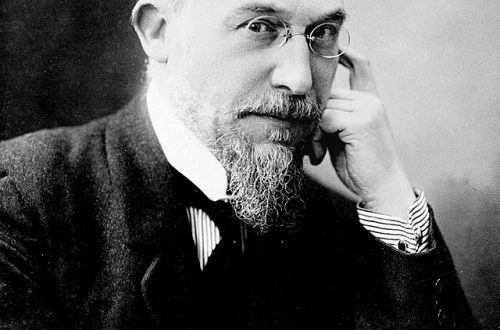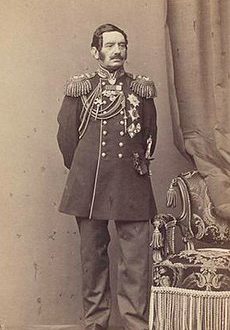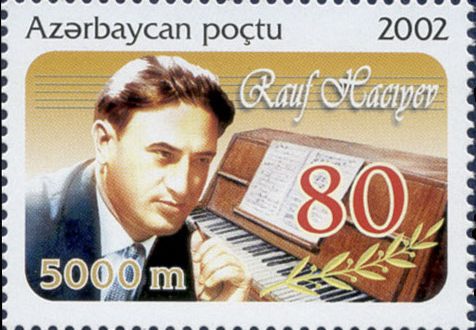
Alexander Vasilyevich Mosolov |
Alexander Mosolov

Complicated and unusual is the fate of A. Mosolov as a composer, a bright and original artist, in whom interest has been growing more and more lately. The most incredible stylistic modulations took place in his work, which reflected the metamorphoses that took place at various stages in the development of Soviet music. The same age as the century, he boldly burst into art in the 20s. and organically fit into the “context” of the era, with all its impulsiveness and indefatigable energy, embodying its rebellious spirit, openness to new trends. For Mosolov 20s. became a kind of period of “storm and stress”. By this time, his position in life was already clearly defined.
The fate of Mosolov, who in 1903 moved with his parents from Kyiv to Moscow, was inextricably linked with the revolutionary events. Warmly welcoming the victory of the Great October Revolution, in 1918 he volunteered for the front; in 1920 – demobilized due to shell shock. And only, in all likelihood, in 1921, having entered the Moscow Conservatory, Mosolov began to compose music. He studied composition, harmony and counterpoint with R. Glier, then transferred to the class of N. Myaskovsky, from whom he graduated from the conservatory in 1925. At the same time, he studied piano with G. Prokofiev, and later with K. Igumnov. The intense creative takeoff of Mosolov is amazing: by the middle of the 20s. he becomes the author of a significant number of works in which his style is developed. “You are such an eccentric, it climbs out of you, as if from a cornucopia,” N. Myaskovsky wrote to Mosolov on August 10, 1927. “It’s no joke to say – 10 romances, 5 cadences, a symphonic suite, and you write something a little. This, my friend, is “Universal” ”(Universal Edition publishing house in Vienna. – N.A.),“ and she will howl from such a quantity ”! From 1924 to 1928, Mosolov created almost 30 opuses, including piano sonatas, chamber vocal compositions and instrumental miniatures, a symphony, a chamber opera “Hero”, a piano concerto, music for the ballet “Steel” (from which the famous symphonic episode appeared “Factory”).
In subsequent years, he wrote the operetta “The Baptism of Russia, Anti-Religious Symphony” for readers, choir and orchestra, etc.
In the 20-30s. interest in Mosolov’s work in our country and abroad was most associated with the “Factory” (1926-28), in which the element of sound-depictive polyostinato gives rise to the feeling of a huge mechanism at work. This work largely contributed to the fact that Mosolov was perceived by his contemporaries mainly as a representative of musical constructivism associated with characteristic trends in the development of the Soviet drama and musical theater (recall the directorial works of Vs. “Metallurgical Plant” from the opera “Ice and Steel” by V. Deshevov – 1925). However, Mosolov during this period was looking for and acquiring other layers of modern musical style. In 1930, he wrote two extraordinarily witty, mischievous vocal cycles containing an element of outrageousness: “Three Children’s Scenes” and “Four Newspaper Ads” (“from Izvestia of the All-Russian Central Executive Committee”). Both writings caused a noisy reaction and ambiguous interpretation. Why Artоyat only the newspaper texts themselves, for example: “I personally go to kill rats, mice. There are reviews. 25 years of practice”. It is easy to imagine the state of listeners brought up in the spirit of the tradition of chamber music! Being in line with the modern musical language with its emphasized dissonance, chromatic wanderings, the cycles nevertheless have a clear continuity with the vocal style of M. Mussorgsky, up to direct analogies between “Three Children’s Scenes” and “Children’s”; “Newspaper Ads” and “Seminarian, Rayk”. Another significant work of the 20s. – The first piano concerto (1926-27), which marked the beginning of a new, anti-romantic view of this genre in Soviet music.
By the beginning of the 30s. the period of “storm and onslaught” in Mosolov’s work ends: the composer abruptly breaks with the old style of writing and begins to “grope” for a new one, directly opposite to the first. The change in the musician’s style was so radical that, comparing his works written before and after the early 30s, it is hard to believe that they all belong to the same composer. Stylistic modulation by having committed; which began in the 30s, determined all of Mosolov’s subsequent work. What caused this sharp creative change? A certain role was played by tendentious criticism from the RAPM, whose activity was characterized by a vulgarized approach to the phenomena of art (in 1925 Mosolov became a full member of the ASM). There were also objective reasons for the rapid evolution of the composer’s language: it corresponded to the Soviet art of the 30s. gravitation towards clarity and simplicity.
In 1928-37. Mosolov actively explores Central Asian folklore, studying it during his trips, as well as referring to the famous collection of V. Uspensky and V. Belyaev “Turkmen Music” (1928). He wrote 3 pieces for piano “Turkmen Nights” (1928), Two Pieces on Uzbek Themes (1929), which stylistically still refer to the previous, rebellious period, summing it up. And in the Second Concerto for Piano and Orchestra (1932) and still more in Three Songs for Voice and Orchestra (30s), a new style is already clearly outlined. Late 20s was marked by the only experience in Mosolov’s work of creating a major opera on civil and social themes – “Dam” (1929-30), – which he dedicated to his teacher N. Myaskovsky. The libretto by Y. Zadykhin is based on a plot consonant with the period of the turn of the 20-30s: it deals with the construction of a dam for a hydroelectric power station in one of the remote villages of the country. The theme of the opera was close to the author of The Factory. The orchestral language of the Plotina reveals closeness to the style of Mosolov’s symphonic works of the 20s. The former manner of sharply grotesque expression is combined here with attempts to create positive images in music that meet the requirements of a social theme. However, its embodiment often suffers from a certain schematism of plot collisions and heroes, for the embodiment of which Mosolov did not yet have sufficient experience, while in the embodiment of the negative characters of the old world he had such experience.
Unfortunately, little information has been preserved about Mosolov’s creative activity after the creation of Dam. At the end of 1937 he was repressed: he was sentenced to 8 years in a forced labor camp, but on August 25, 1938 he was released. In the period from 1939 to the end of the 40s. there is a final formation of a new creative manner of the composer. In the extraordinarily poetic Concerto for harp and orchestra (1939), the folklore language is replaced by the original author’s thematics, distinguished by the simplicity of the harmonic language, melodicism. In the early 40s. Mosolov’s creative interests are directed along several channels, one of which was opera. He writes the operas “Signal” (libre by O. Litovsky) and “Masquerade” (after M. Lermontov). The score of The Signal was completed on October 14, 1941. Thus, the opera became one of the first in this genre (perhaps the very first) response to the events of the Great Patriotic War. Other important areas of Mosolov’s creative work of these years – choral and chamber vocal music – are united by the theme of patriotism. The main genre of choral music of the war years – the song – is represented by a number of compositions, among which three choirs accompanied by pianoforte to the verses of Argo (A. Goldenberg), written in the spirit of mass heroic songs, are especially interesting: “A song about Alexander Nevsky, a song about Kutuzov” and “ Song about Suvorov. Leading role in chamber vocal compositions of the early 40s. play the genres of ballads and songs; a different sphere is lyrical romance and, in particular, romance-elegy (“Three elegies on poems by Denis Davydov” – 1944, “Five poems by A. Blok” – 1946).
During these years, Mosolov again, after a long break, turns to the symphony genre. The Symphony in E Major (1944) marked the beginning of a large-scale epic of 6 symphonies, created over a period of more than 20 years. In this genre, the composer continues the line of epic symphonism, which he developed in Russian, and then in Soviet music of the 30s. This genre type, as well as the unusually close intonation-thematic ties between the symphonies, give the right to call the 6 symphonies an epic by no means metaphorically.
In 1949, Mosolov takes part in folklore expeditions to the Krasnodar Territory, which marked the beginning of a new, “folklore wave” in his work. Suites for an orchestra of Russian folk instruments (Kubanskaya, etc.) appear. The composer studies the folklore of Stavropol. In the 60s. Mosolov began to write for the folk choir (including the Northern Russian folk choir, led by the composer’s wife, People’s Artist of the USSR Y. Meshko). He quickly mastered the style of the northern song, making arrangements. The long work of the composer with the choir contributed to the writing of the “Folk Oratorio about G. I. Kotovsky” (Art. E. Bagritsky) for soloists, choir, reader and orchestra (1969-70). In this last completed work, Mosolov turned to the events of the civil war in Ukraine (in which he participated), dedicating an oratorio to the memory of his commander. In the last years of his life, Mosolov made sketches for two compositions – the Third Piano Concerto (1971) and the Sixth (actually the Eighth) Symphony. In addition, he hatched the idea of the opera What Is To Be Done? (according to the novel of the same name by N. Chernyshevsky), which was not destined to come true.
“I am glad that at present the public has become interested in the creative heritage of Mosolov, that memoirs about him are being published. … I think that if all this had happened during the life of A. V. Mosolov, then perhaps the revived attention to his compositions would have prolonged his life and he would have been among us for a long time, ”the remarkable cellist A. Stogorsky wrote about the composer , to whom Mosolov dedicated the “Elegiac Poem” for cello and orchestra (1960).
N. Aleksenko




